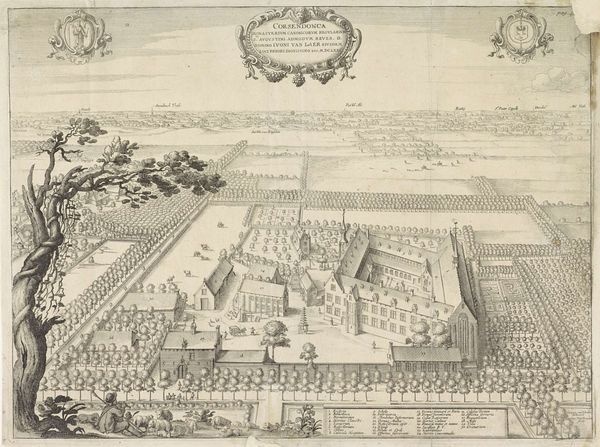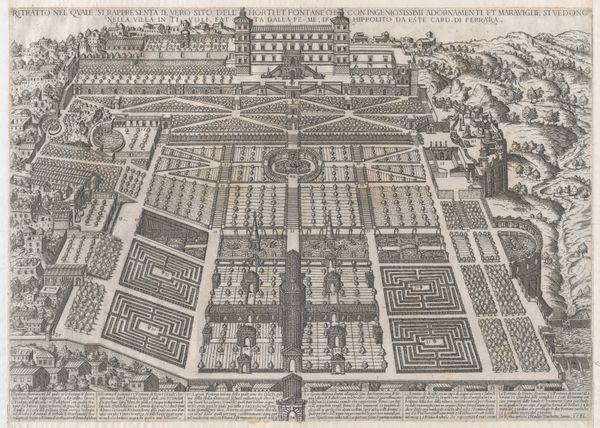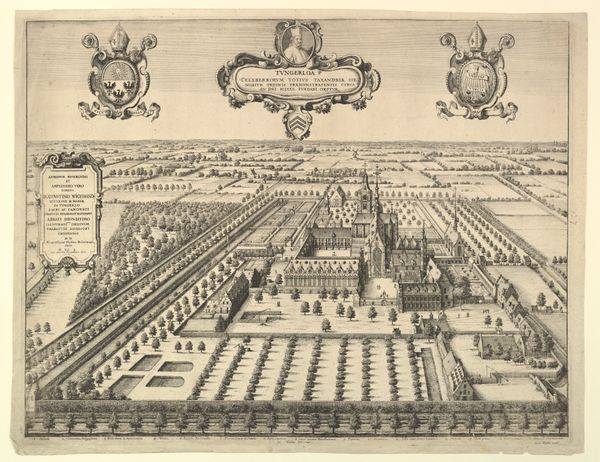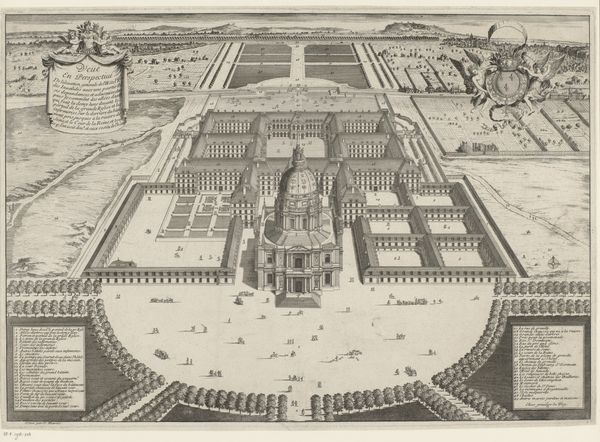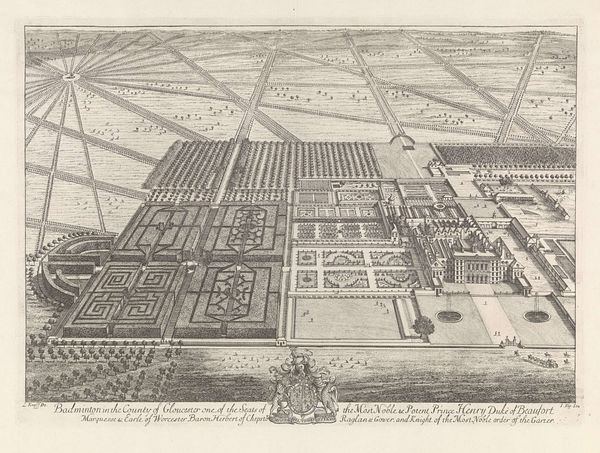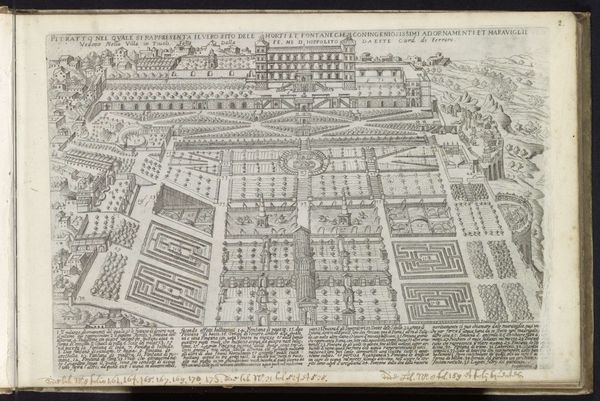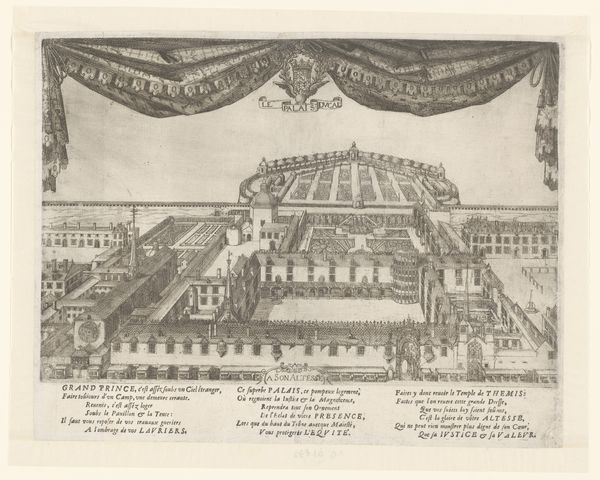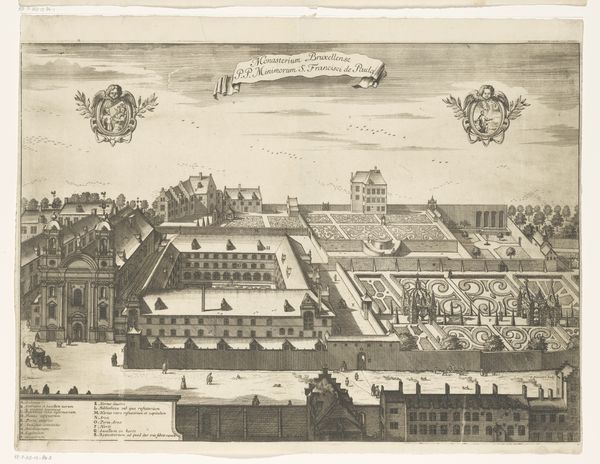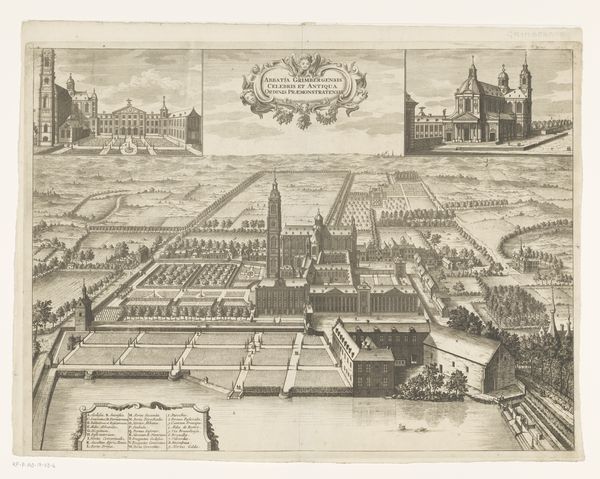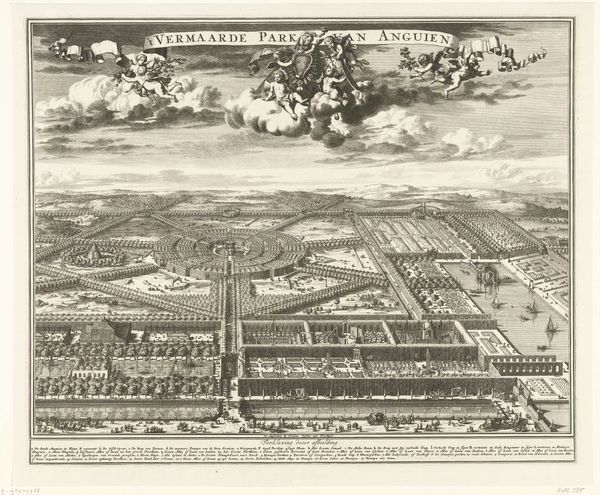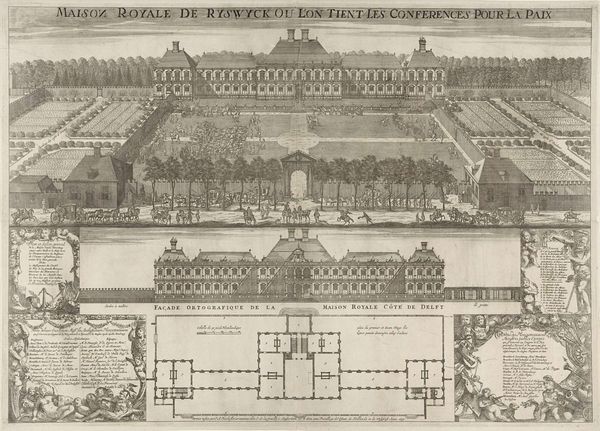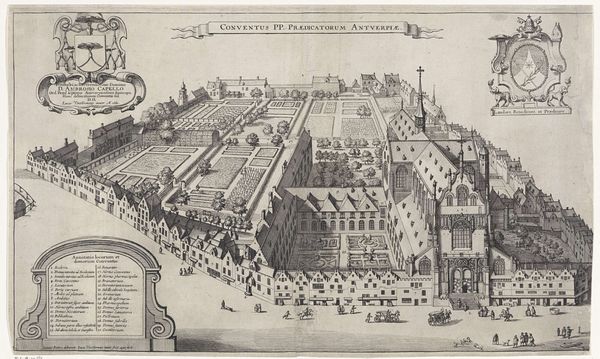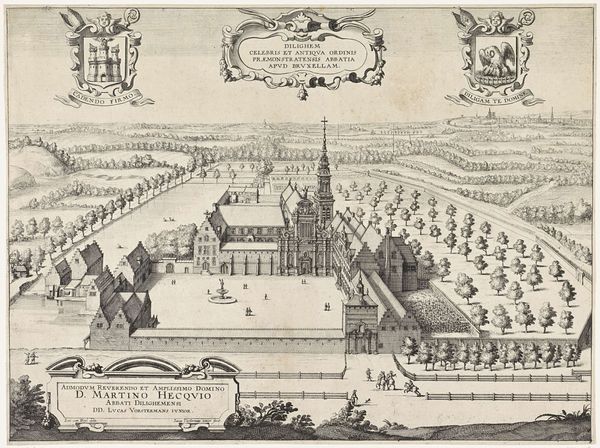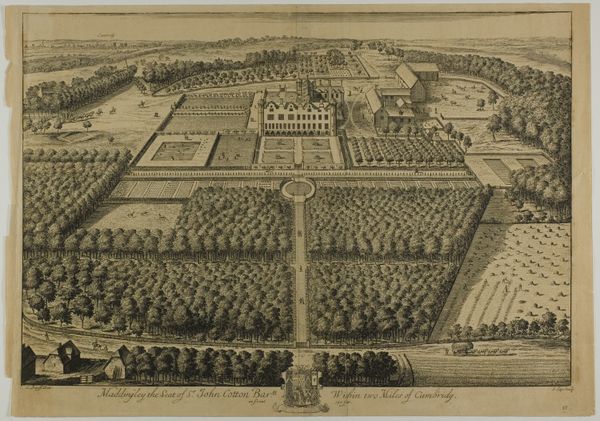
print, etching, engraving, architecture
#
garden
#
baroque
# print
#
etching
#
old engraving style
#
landscape
#
engraving
#
architecture
Dimensions: height 355 mm, width 428 mm
Copyright: Rijks Museum: Open Domain
Curator: Let's explore this fascinating engraving, "Tuinen van de Villa d'Este te Tivoli, 1726," currently residing at the Rijksmuseum. Editor: At first glance, the etching evokes a sense of serene, almost unsettling, order. The hyper-structured landscape clashes with the natural rolling hills. It almost feels dystopian, this overwhelming sense of control imposed onto nature. Curator: Absolutely, and I think understanding the labor involved adds another layer to that reading. Imagine the sheer manpower needed to carve and cultivate this landscape. An elaborate print like this showcases the patronage and social context around monumental garden design, doesn’t it? The engraving allows for its reproduction, circulating the Este family’s prestige far beyond their immediate circle. Editor: Precisely. It also exposes how landscape architecture of this kind intersects with themes of power, social status and identity. What were the experiences of the countless gardeners, water engineers, and enslaved peoples behind the construction? What narratives of social class, forced labor, and wealth accumulation are obscured within this "old engraving style?" Curator: Very relevant questions to ask when faced with this image of opulence! The material aspects—the ink, paper, the very process of engraving itself— speak to a specific type of commodity production. It shows the development and evolution of printmaking and how technical advances impacted the dissemination of information and propaganda. Editor: Indeed, we should see it as more than simply a 'landscape’ view, or even simply an early architectural rendering; it is a cultural artifact that should be viewed critically through gender, class, and historical circumstance. What were women's lived experiences inside and outside those dominating, geometric forms, and what relationship did these garden spaces provide for their subjugated labor or the reproduction of a privileged leisure class? Curator: I think examining both the technical aspects and the social implications allows for a fuller understanding. It is a confluence of technique, taste, and social engineering all captured in one etching. Editor: Agreed. I see this not just as a record of history, but a call to critically evaluate how power structures shape our world, even today.
Comments
No comments
Be the first to comment and join the conversation on the ultimate creative platform.
